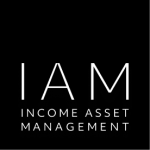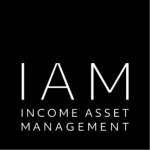Why Australian Investment Grade Bonds Stand Out in Today’s Market
Today in Australia, traditional income sources such as savings accounts and term deposits are offering less than inspiring returns. Major equities like CBA show net dividend yields of just 2.79% and trade at high price-to-earnings ratios, making them appear more like growth stocks than reliable income plays. The ASX 200 currently yields around 3.25%, a figure that loses further appeal when adjusted for inflation. As we approach the end of the year, it’s possible both the RBA cash rate and the ASX 200 yield will dip below 3.50%—a rare convergence. Even hybrid securities, often considered for higher yield, are only offering between 5% and 5.50% for short maturities.
With average interest rates currently hovering above 3% and equity dividend yields facing downward pressure, investors are increasingly seeking more robust fixed income opportunities. As the RBA and banks have started cautiously trimming rates, the case for allocating to investment grade bonds—particularly AUD-denominated credit—has never been stronger.
Yields in this category currently range between 5.50% and 6.00%, providing high-quality returns without the need to venture into riskier segments such as high-yield or private credit. These securities are backed by strong credit ratings, making them a sensible choice for those prioritising capital preservation alongside income generation.
Navigating a Challenging Market
Delayed interest rate cuts from the US Federal Reserve, expectations for further moves by the RBA, inflation remains stickier than expected, and political risks—from shifting tariff policies to upcoming elections—have all contributed to heightened uncertainty. In this environment, we stress the need for more resilient income strategies which balance both yield and risk, across defensive assets like AUD investment grade credit. By constructing portfolios that blend various defensive instruments, investors can better withstand market volatility and unpredictable macroeconomic shifts.
Bank and Corporate Investment Grade Bonds: A Closer Look
Tier 2 bank debt—issued by Australia’s leading banks such as CBA, NAB, WBC, and ANZ—offers particularly attractive yields without the illiquidity risks often associated with private credit. Despite these banks being among the most expensive in the world from an equity perspective, their Tier 2 bonds remain competitively priced for income-focused investors.
Further diversification can be achieved through corporate investment grade bonds (non-financials), which combine appealing yields with improving credit conditions and healthy fundamentals, especially as rates stabilise. Recent primary market performance for these bonds has been strong, reinforcing their role in a well-constructed income portfolio.
The Role of Australian RMBS in Diversified Portfolios
Australian residential mortgage-backed securities (RMBS) have historically demonstrated strong credit quality, with investors in rated tranches never experiencing credit losses. This track record is largely due to low default rates on underlying loans and the robust structure of these securities, which ensures sufficient income remains in the mortgage pool to cover payments. RMBS can thus provide an additional layer of diversification and yield in a fixed income allocation.
Portfolio Construction: A Practical Example
To illustrate a balanced approach, consider a Managed Discretionary Account model such as IAM’s Income MDA, with a 60% allocation to AUD investment grade credit and 40% to Syndicated Term Loans. This structure leverages the defensive qualities and income potential of investment grade bonds, while the inclusion of syndicated loans further diversifies risk and returns. Such a portfolio is designed to perform well across market cycles and interest rate environments.
The stable attractiveness of investment-grade credit
As traditional income sources weaken and market risks increase, AUD investment grade credit offers a combination of yield, quality, and resilience. By incorporating these bonds—alongside select corporate credit and RMBS—investors can build robust, income-generating portfolios that are well-equipped to weather the challenges ahead. Now is the time for investors and advisers to revisit fixed income allocations and capitalise on the enduring strengths of investment grade bonds for resilient income and long-term portfolio stability.
To discuss, call us on
1300 784 132
Get in Touch
Please contact your IAM relationship manager if you have any questions or would like to discuss.
Related Articles
May 6 2025 | 5 min

